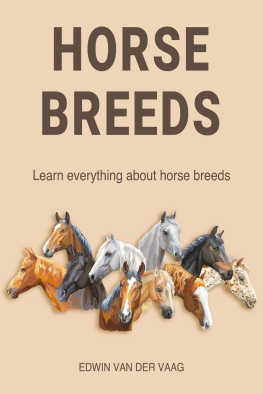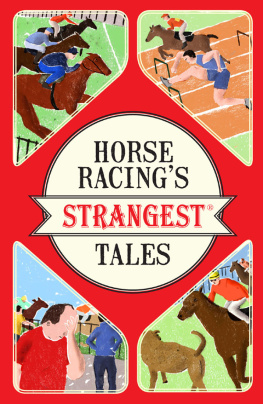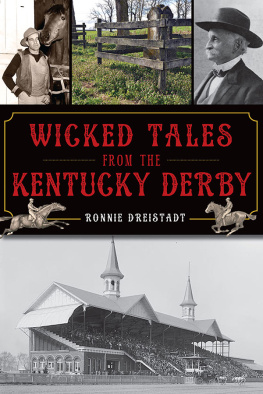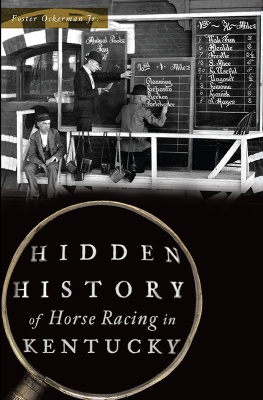Heroes and
Horses
Tales of the Bluegrass
PHILIP ARDERY
Publication of this volume was made possible in part
by a grant from the National Endowment for the Humanities.
Copyright 1996 by The University Press of Kentucky
Paperback edition 2004
The University Press of Kentucky
Scholarly publisher for the Commonwealth,
serving Bellarmine University, Berea College, Centre
College of Kentucky, Eastern Kentucky University,
The Filson Historical Society, Georgetown College,
Kentucky Historical Society, Kentucky State University,
Morehead State University, Murray State University,
Northern Kentucky University, Transylvania University,
University of Kentucky, University of Louisville,
and Western Kentucky University.
All rights reserved.
Editorial and Sales Offices: The University Press of Kentucky
663 South Limestone Street, Lexington, Kentucky 40508-4008
www.kentuckypress.com
The Library of Congress has cataloged the hardcover edition as follows:
Ardery, Philip, 1914
Heroes and horses : tales of the Bluegrass / Philip Ardery.
p. cm.
ISBN-10: 0-8131-1992-8 (cloth : alk. paper)
1. Bourbon County (Ky.)Social life and customs.
2. Bluegrass Region (Ky.)Social life and customs. 3. Ardery, Philip,
1914 4. Horse farmsKentuckyBourbon County. 5. Bourbon
County (Ky.)Biography. I. Title.
F457.B8A73 1996
ISBN-10: 0-8131-9115-7 (paper: alk. paper)
ISBN-13: 978-0-8131-9115-7
This book is printed on acid-free recycled paper meeting
the requirements of the American National Standard
for Permanence in Paper for Printed Library Materials.
Manufactured in the United States of America.
| Member of the Association of
American University Presses |
Acknowledgments
My first expression of appreciation must go to Evalin Douglas, an outstanding editor. She smoothed out the major bumps in my bumpy writing, leaving the little bumps so those who know my deficiencies can identify what they see.
Then a host of others need mention. I remember with gratitude my talks about Claiborne Farm with Waddell Hancock; with her son and farm president, Seth, for many details; and with her artistic daughter, Dell, who provided photographs of that farm. Similarly, Lillie Webb of Xalapa Farm helped me with my work on Ed Simms and Xalapa.
The library staffs of the Lexington Theological Seminary, the Louisville Southern Baptist Seminary, and the Louisville Presbyterian Seminary helped me find many details for the story about Barton Stone and Cane Ridge.
Of course, no one could write about Bourbon County history without heavy dependence on the excellent reporting of the Lexington Herald-Leader and the Louisville Courier-Journal.
By the kindness of the editors of the thoroughbred magazine Spur, the Sunday magazine of the Courier-Journal, The Filson Club Quarterly, and the Register of the Kentucky Historical Society, I have been permitted to republish, in revised versions, articles or parts of articles they carried many months or years ago.
The rest of the credit goes to Anne, my wife, whose angelic patience has carried me over the many times when I became angry and dissatisfied with what I was trying to do.


Prologue
It is difficult for me to say how much is still with me that I learned about Bourbon County as a child. How much is left of the boy who lay belly-down chewing blades of bluegrass and heads of sweet white clover, or of the boy who bent over the high bank of Houston Creek to see the kingfishers wing in and out of their hole in the bank.
So much of the happiness of those days was somehow connected with water. There was the springhouse down across the road from our home where a clear stream of icy water came out of the ground and formed a pool framed with limestone slabs, then flowed through a hole in the brick wall and into the tiny shack. Inside, the water made a left-angle curve, then a right, and flowed out through another hole in the back wall. The back room was where we put pounds of butter and watermelons in the water to keep them cold.
The spring branch had its beginnings at the back of the springhouse and ran about half a mile till it emptied into Houston Creek. It was always alive with crawdads, minnows, and an occasional small, harmless water snake. Building a mud dam across it was great fun. The water would build up and up into a pool and finally trickle across the top of the dam. Next thing you knew, the whole mud pile would explode down the stream.
How many of those memories can I carry with me, and how much of that same child am I now? Perhaps some later experienceslike looking down the barrel of a 20 mm automatic weapon firing at me, or seeing pieces of an airman friend picked up from the ground and carried away in a basketmay have blotted out much of my childhood belief that things were basically all right and would never change.
ONE
Rocclicgan
Bourbon County, Virginia, was established by the Virginia General Assembly in 1785; Kentucky was not to become a state until seven years later. Out of Bourbon County were carved some thirty other counties of the present Commonwealth of Kentucky, north to the Ohio River and east to the Big Sandy. It was a wilderness then. The Ardery pioneers came into their land the easiest wayby marriage. My great-great grandfather John Ardery Jr. married Elizabeth McConnell on New Years Day, 1818. Her father, William McConnell, had fought in the Revolutionary War and for his service had received more than a thousand acres of Bluegrass land by federal land grant. This was to make of the Arderys something close to landed gentryArderys whose ancestor William Ardery had left Ireland three generations earlier, grabbing for any opportunity he could find.



















